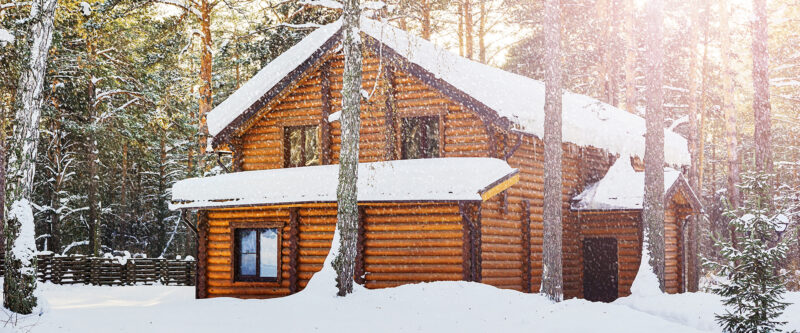Your home is more than a building, it’s where your family lives and where memories are made. Home insurance helps protect you from the financial impact of events like fire, theft, accidental water damage, and liability claims. Our licensed advisors are here to help build your insurance profile, find insurance coverage that meets your needs, and look for available savings.
Why Homeowners in Ontario Trust PetleyHare
Owning a home in Ontario involves risks such as severe weather, evolving property standards, and local by-law requirements. As a local insurance broker, Petley-Hare partners with top insurers across the province to provide home insurance customized to your property type, lifestyle, and budget. Our coverage includes protection for your home’s structure, contents, and personal liability, built to meet the needs of Ontario homeowners.
Available Property Insurance Policies and What They Cover

Homeowners Insurance
Designed for homeowners, this policy includes:
- Your home and attached structures (garage, deck)
- Detached structures (shed, detached garage)
- Personal property and liability protection
- Additional Living Expenses (ALE) to cover temporary housing, meals, and relocation costs during repairs
Condo Insurance
For condo unit owners in high-rise, low-rise, or townhouse settings. This covers:
- Interior unit upgrades (flooring, fixtures)
- Personal property and liability
- ALE coverage for hotel stays or temporary rentals
- Special assessments from the condo corporation


Tenant Insurance
We provide insurance for renters in apartments, homes, or rental units, which includes:
- Personal property coverage
- Liability protection
- ALE support during repair-related relocations
Types of Home Insurance and Coverage Options
Most house insurance policies come in package formats with standard coverages built in.
Fire & Extended Coverage Form
- Basic protection with limited scope
- Not usually enough for mortgage requirements
Basic/Named Perils Form
- Covers specific risks (e.g., fire, lightning)
- Offers lower personal property coverage
Broad Form
- Comprehensive building coverage
- Named perils coverage for contents
Comprehensive Form
- Full all-risk coverage for building and contents
- Most popular choice for homeowners' insurance, condo, and renters' insurance
Examples of claims that would not be covered:
Home insurance is designed to protect against sudden and unwanted events, but all policies include certain limitations and exclusions. It's important to understand what isn’t covered so you can plan accordingly.
Common exclusions include:
- Wear and tear, or gradual damage
- Settling, cracking, or shifting of the home
- Continuous seepage or leaks
- Freezing damage if heating isn’t maintained while away
Optional Coverages
Sewer Back-Up Endorsement
This endorsement will provide coverage for damage as a result of water that backs up or overflows from a sewer, drain or sump, subject to your deductible.
Overland Water Endorsement
This endorsement provides coverage for the actual loss or damage caused by overland water, including the sudden and accidental backing up or escape of water or sewage from a sewer, sump pump, or septic system resulting from overland water. Provided there is evidence that the overland water has also entered the building from an entry point other than the sewer backup itself, subject to your deductible.
Service Line Endorsement
This endorsement provides coverage for the costs of excavation and replacement of your water lines, power, data and communication services lines in the event of damage
Home Equipment Breakdown Endorsement
This endorsement provides coverage against loss or damage to your electronics, appliances, and home systems against unpredictable mechanical, electrical or pressure-system breakdowns.
High-Value Item Coverage
You may also want to remember that your policy may contain Special Limits of insurance for certain types of property and/or for certain types of losses. There are options available for you to “Schedule” certain items of value on to your property policy to ensure that they would be properly and fully covered in the event of a loss. Items with special limits of insurance for certain types of losses on your property policy are Jewellery, Watches, Gems, Fur Garments and Garments Trimmed with Fur, Bicycles or E-Bikes, or Collectibles.
Factors That Affect Home Insurance Premiums
With home insurance rates rising across Ontario, it’s more important than ever to be proactive about managing your premium. Understanding what influences your home insurance premium can help you make informed decisions about coverage and costs. Key factors include:
- Location: Risk level of your neighbourhood
- Age & Condition: Older systems increase risk
- Construction Type: Fire-resistant materials lower premiums
- Claims History: Frequent claims may raise costs
- Deductibles: Higher deductibles lower your premium
- Credit Score: May impact pricing, based on the insurer
Home Insurance Discounts & Savings Tips
Homeowners can take advantage of various discounts to reduce insurance costs, including:
- Multi-Policy Discount: Bundle home and auto
- Loyalty Discount: Available to long-term clients
- Claims-Free Discount: For those with no past claims
- Alarm Systems Discount: For monitored safety systems
- New Home Discount: Lower rates for new builds
How to Handle a Home Insurance Claim
If your home is damaged, or you experience a loss, follow these steps to file a claim:
- Put Safety First: Ensure everyone is safe and your home is secure before checking the damage.
- Document the Damage: Take clear photos and videos of all affected areas and belongings.
- Make Temporary Repairs: Prevent further damage (e.g., cover broken windows or leaks) and save all receipts for reimbursement.
- Report the Claim: Contact your insurance provider as soon as possible. You can reach us 24/7 or visit our website for direct claims contacts.
- Submit Documents: Send in receipts, repair estimates, and police reports if needed.
- Work With the Adjuster: The adjuster will inspect the damage and keep you updated. We’ll support you throughout to help keep your claim on track.
- Review the Settlement: Make sure the offer covers all repairs. You can negotiate if needed.
- Complete the Repairs: The insurer may recommend contractors. If you choose your own, confirm approval with the adjuster before starting work. Always use a licensed, insured contractor and keep all invoices.
Tips for a Smooth Claims Process:
- Keep an updated home inventory list.
- Review your policy annually to ensure adequate coverage.
- Address maintenance issues proactively to prevent claim denials.
- Maintain copies of receipts and warranties for valuable items to expedite claims processing.
Trust Us for Your Homeowners Insurance Needs
At PetleyHare we are dedicated to simplifying home insurance, ensuring you have the right coverage to secure your home and loved ones. Contact us today for a personalized home insurance quote customized to your needs, and gain the peace of mind that comes with trusted local support.
Call us today to speak with an experienced insurance broker.
Request a free quote online and get the coverage you need.
Schedule a consultation to explore your options in detail.
Home Insurance FAQs
Have questions about home insurance coverage? You're not alone. These frequently asked questions can help you better understand how coverage works in Canada, including what to expect from a policy and how to manage the cost of your home insurance.
What Factors Affect My Home Insurance Premium?
The cost of your home insurance depends on several things:
- Your location and province
- Age and condition of the home
- Claims history
- Construction type (e.g. brick vs. wood)
- Chosen deductible and amount of coverage
Do I Need Flood Insurance for My Home in Ontario?
Standard home insurance doesn’t include flood damage. You may need to add overland water or sewer back-up coverage, especially in flood-risk areas.
Is Home Insurance Mandatory for Homeowners in Ontario?
Home insurance isn’t legally required, but most mortgage lenders guarantee the loan only with proof of coverage for your home. It’s also a smart way to protect your investment against unwanted losses.
How Can I Save on My Home Insurance Premium?
To reduce your home insurance premium, try the following:
- Choose a higher deductible
- Bundle with auto for competitive rates
- Install home security systems
- Use the online quote tool to compare insurance offers
- Review your coverage regularly for possible improvement
What's the Difference Between Replacement Cost and Actual Cash Value Coverage?
- Replacement Cost: Covers the full price to repair or replace items at today’s rates.
- Actual Cash Value: Pays the depreciated value of your items, which may be lower.
What Does Home Insurance Cover?
Home insurance typically covers the structure of your home, personal belongings, liability protection, and additional living expenses if your home is temporarily uninhabitable due to a covered event.
How Much Home Insurance Do I Need?
The amount of home insurance you need depends on the value of your home and belongings, potential liability risks, and any specific requirements from your mortgage lender.
What is the Difference Between Homeowners and Renters Insurance?
- Homeowners’ insurance covers both the building and belongings.
- Renters’ insurance covers only personal items and liability, not the structure.
What’s the Difference Between Market Value and Replacement Cost?
- Market Value: The amount your home would sell for in the current market, including land value.
- Replacement Cost: The amount needed to rebuild your home from scratch, regardless of market conditions. Insuring your home based on replacement cost ensures full financial protection in case of total loss.
Can I Be Dropped by My Home Insurance Provider?
Yes, insurers can cancel policies for reasons such as excessive claims, non-payment, or failure to maintain the property. If dropped, you may need to seek coverage through high-risk insurance providers.
Does Home Insurance Cover Home Renovations?
Standard home insurance policies may not fully cover renovations. If you’re planning major upgrades, inform your insurer to adjust coverage accordingly. Renovations that improve structural integrity may reduce premiums, while additions increasing home value may require higher coverage limits.
What Should I Do if My Claim is Denied?
If your home insurance claim is denied:
- Request a Detailed Explanation: Ask for a written reason for denial.
- Review Your Policy: Ensure the denial is justified based on coverage details.
- Provide Additional Evidence: Submit further documentation or repair estimates.
- File an Appeal: Work with your insurer’s dispute resolution process.
- Seek Legal Advice: If needed, consult an attorney or insurance ombudsman.
More Home Insurance Insights
- How to Winterize a Cottage in Ontario and Avoid Costly Insurance ClaimsAs temperatures drop in Ontario and cottage season winds down, now is the time to protect your getaway from winter’s ...
- How to Protect Your Home From Ontario WildfiresWhile wildfires might feel like a distant threat to those living in cities or suburbs, the reality is that these ...
- Smart & Confident Home Buying: Insurance & Inspection TipsFeaturing Jane Thuet, Real Estate Agent with RE/MAX Hallmark Inner Circle Real Estate Group Home buying is one of the ...



